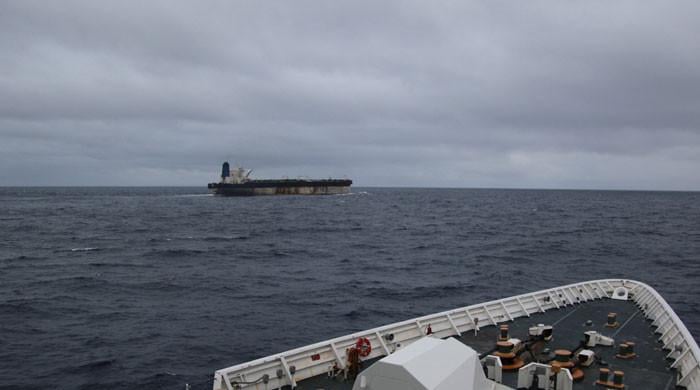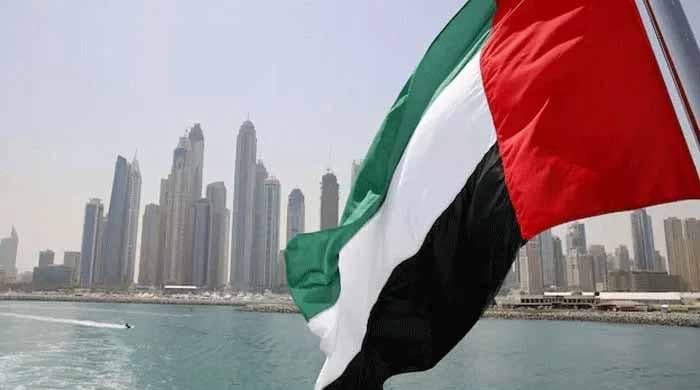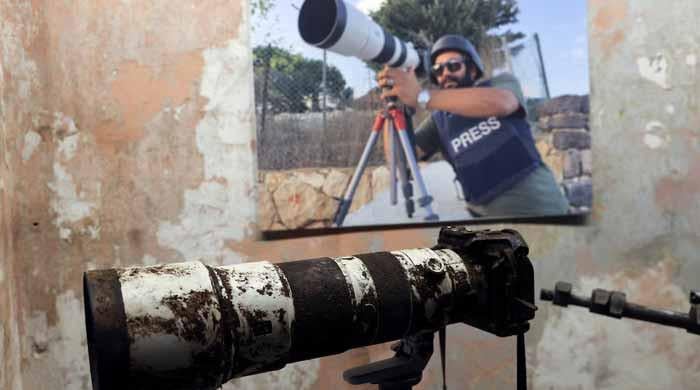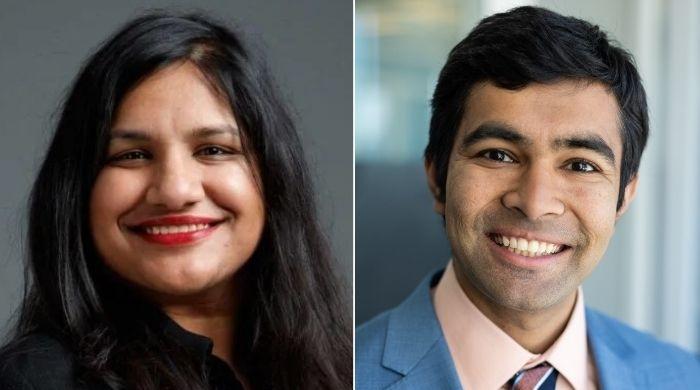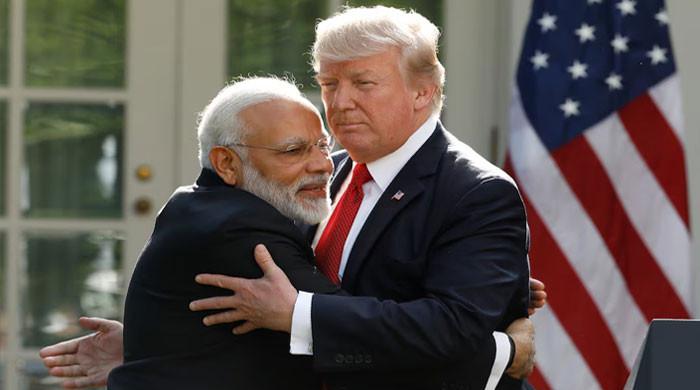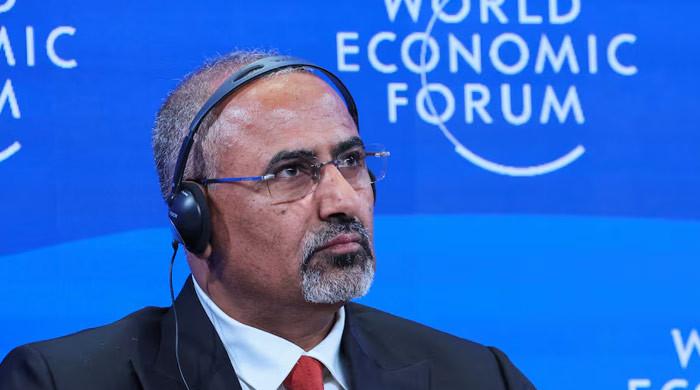N Korea shows off largest-ever number of nuclear missiles at nighttime parade
Leader Kim Jong Un attended parade with his daughter, who is seen as playing possible future leadership role in hereditary dictatorship
February 09, 2023
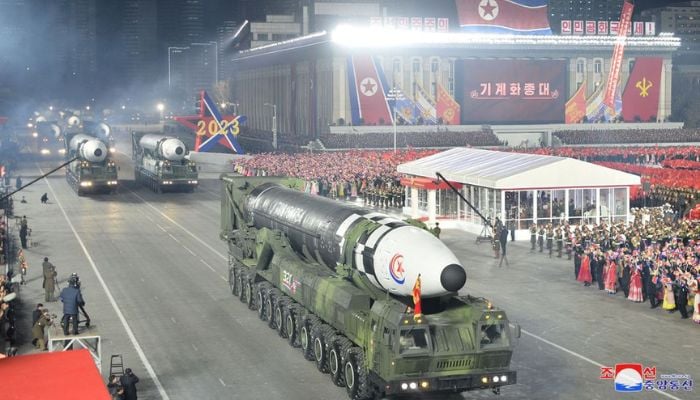
- N Korea hints at new solid-fuel weapon during nighttime parade.
- Parade held to mark 75th anniversary of founding of its army.
- Country has test-launched dozens of advanced missiles despite UNSC sanctions.
SEOUL: Nuclear-armed North Korea showcased its missile production muscle during a nighttime parade, state media reported on Thursday, displaying more intercontinental ballistic missiles (ICBMs) than ever before and hinting at a new solid-fuel weapon.
The country has forged ahead with its ballistic missile programme, test-launching dozens of advanced missiles last year despite United Nations Security Council resolutions and sanctions.
"This time, Kim Jong Un let North Korea’s expanding tactical and long-range missile forces speak for themselves," said Leif-Eric Easley, a professor at Ewha University in Seoul. "The message Pyongyang wants to send internationally, demonstrating its capabilities to deter and coerce, will likely come in the form of solid-fuel missile tests and detonation of a miniaturised nuclear device."
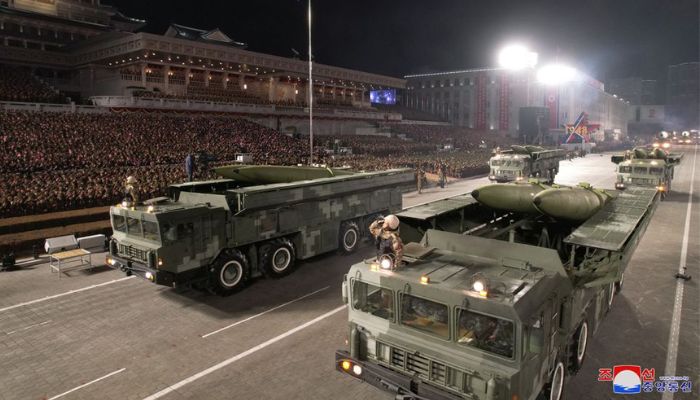
Imagery released by state media outlet KCNA of the Wednesday night parade showed as many as 11 Hwasong-17s, North Korea's largest ICBM, which are suspected to be able to strike nearly anywhere in the world with a nuclear warhead.
Eleven missiles could be enough to overwhelm current US missile defences, Ankit Panda of the United States–based Carnegie Endowment for International Peace said on Twitter.
"This is cumulatively more ICBM launchers than we've ever seen before at a North Korean parade," he said in a tweet.
The Hwasong-17 was first tested last year. Alongside them at the parade were what some analysts said could be a prototype or mockup of a new solid-fuel ICBM in canister launchers.
Developing a solid-fuel ICBM has long been seen as a key goal for the country, as it could make its nuclear missiles harder to spot and destroy during a conflict.
North Korea held the parade in Pyongyang to mark the 75th anniversary of the founding of its army, KCNA said. Leader Kim Jong Un attended with his daughter, who is seen as playing a possible future leadership role in the hereditary dictatorship.
South Korea's foreign ministry criticised North Korea for holding the event when it is facing a worsening food crisis and economic difficulties.
"We urge North Korea to immediately stop illegal nuclear and missile development, and reckless nuclear threats, and promptly return to the denuclearisation negotiations," South Korea's foreign ministry spokesperson, Lim Soo-suk, told a regular briefing.
North Korea has said its missile programme and nuclear weapons development fall under its sovereign right to self-defence, and are necessary because of hostile policies by the United States and its allies.
Solid-fuel missile
In December North Korea conducted the first static ground test of a large solid-propellant rocket motor at its Sohae Satellite Launching Station, but at the time it was unclear whether it was solely for the country's submarine-launched ballistic missile (SLBM) programme, said Dave Schmerler, a researcher at the James Martin Center for Nonproliferation Studies (CNS).
North Korea has not launched its new missile submarine, however, so the parade weapon suggests intentional signalling that Pyongyang is pursuing a complex, land-based ICBM deterrent, he said.
"The general takeaway is that we should expect to see North Korea test a large land-based solid-fuel ICBM," Schmerler said.
Most of the country's largest ballistic missiles use liquid fuel, which requires them to be loaded with propellant at their launch site — a time-consuming process.
It is unclear how close the suspected new missile could be to testing. North Korea has sometimes displayed mockups at the parades.




